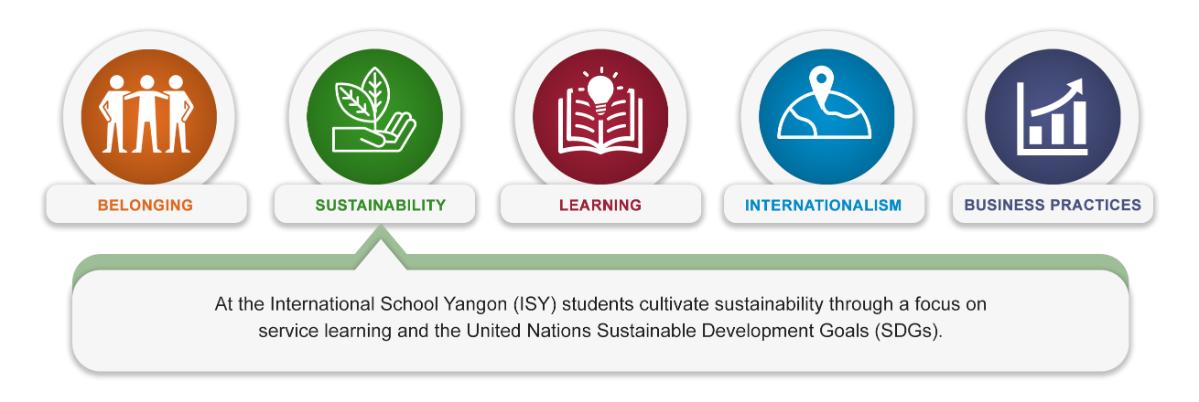The impact of food choice on the environment

One of our Strategic Themes here at ISY is ‘Sustainability’, where students cultivate sustainability through a focus on Service Learning and The United Nations Sustainable Development Goals (SDGs). At ISY we want to be part of the environmental drive to offer students a healthy, nutritious, plant-based diet that contributes towards lower greenhouse gas emissions. Please read further to consider the reasons why we encourage the students and staff of ISY to eat at Nourish or Gusto, our vegetarian outlets on campus.

How can food impact the environment?
Food is closely linked to climate change due to the greenhouse gas emissions associated with its production, transportation, and waste. We have seen a global heatwave this summer and this is evidence of the impact that greenhouse gas emissions are having on our environment. The entire lifecycle of food, from its cultivation to its consumption and disposal, contributes to climate change in various ways. Here are the major key points:
Agriculture is a significant source of greenhouse gas emissions. Methane is released during the digestive process of livestock, particularly cattle, and it is a potent greenhouse gas. Nitrous oxide is another potent greenhouse gas emitted from the use of synthetic fertilizers in crop production. Additionally, deforestation for expanding farmland leads to increased carbon dioxide emissions, as trees are important carbon sinks, and their removal releases stored carbon into the atmosphere.
Transporting food over long distances, whether by road, air, or sea, consumes fossil fuels and releases carbon dioxide. The global food supply chain, which brings food from farms to stores and ultimately to consumers, contributes to the carbon footprint of food.
When food is wasted and ends up in landfills, it decomposes and produces methane as it breaks down. Food waste is a significant contributor to greenhouse gas emissions.
To address the climate impact of food, there are several strategies that individuals, businesses, and governments adopt. These include, encouraging and implementing sustainable agricultural practices, such as regenerative agriculture and organic farming, can reduce emissions and promote soil health, which acts as a carbon sink. Implementing measures to reduce food waste at all stages of the supply chain, from production to consumption, can significantly decrease greenhouse gas emissions. Adopting more plant-based diets and reducing the consumption of meat and dairy products can lower agricultural emissions, as plant-based foods generally have a lower carbon footprint. Encouraging local food production and more efficient transportation methods can help reduce emissions associated with food distribution. Transitioning to renewable energy sources in the food production and distribution sectors can lower carbon emissions.
Overall, the food system’s impact on climate change is significant, and addressing it is crucial in the global efforts to mitigate climate change and build a more sustainable future. Based on general trends and research data, the following foods are known to cause the most greenhouse gas emissions. Beef and lamb production have particularly high emissions intensity due to the methane produced during digestion by cows and sheep, as well as the land-use change involved in creating pasturelands. Dairy production, including cheese, is also associated with high greenhouse gas emissions due to methane from cattle and the energy-intensive processes involved in milk production and processing. Farmed shrimp has a large carbon footprint because of the destruction of mangrove forests for shrimp farms, releasing stored carbon into the atmosphere. Processed meats, such as sausages and deli meats, also have relatively high emissions intensity compared to other foods. Other animal-based foods like pork and poultry also contribute to greenhouse gas emissions, though their intensity may vary.
On the other hand, plant-based foods tend to have lower greenhouse gas emissions intensity, making them more environmentally friendly choices. These include:
Fruits and Vegetables: Generally, fruits and vegetables have lower emissions intensity per kilogram compared to animal-based foods.
Whole Grains: Foods like rice, wheat, and oats are more efficient in terms of greenhouse gas emissions when compared to certain animal-based products.
Legumes: Beans, peas, lentils, and other legumes have relatively low emissions intensity and are good sources of protein.
Nuts and Seeds: Nuts and seeds also have a lower carbon footprint compared to many animal-based foods.
Plant-Based Proteins: Plant-based protein sources like tofu, tempeh, and plant-based meat substitutes often have lower emissions intensity than their animal-based counterparts.
In conclusion, by reducing our consumption of meat and dairy we can positively impact our health and lower our environmental footprint. Plant-based foods are rich sources of essential nutrients, fiber, and antioxidants while being generally lower in saturated fats and cholesterol. They can contribute to better heart health, weight management, and reduced risk of chronic diseases like diabetes and certain cancers. In terms of environmental impact, livestock production, particularly beef and lamb, is associated with significant greenhouse gas emissions and requires large amounts of land, water, and feed resources. By choosing more plant-based options, we can reduce the demand for resource-intensive meat production, leading to lower greenhouse gas emissions and reduced pressure on natural ecosystems.
We are excited to announce that Nourish have created a healthy meal plan and a pilot for this will take place at ISY from Monday 21st August. Prices for the meal plan are Kyats 10,000 for PreK to Grade 2 and Kyats 15,000 for Grades 3 to 12. Please also view the Nourish Ordering Procedures by clicking the button below, which includes a user guide showing you how to place an order. We encourage all students to sign up for this Nourish healthy meal plan.

The International School Yangon
20 Shwe Taungyar Street
Bahan Township
Yangon, Myanmar
+95 (0) 9 880 441 040
